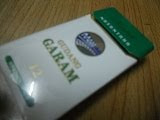Assalamualaikum, First of all, congratulation to Kelantan FA for the winning Piala Malaysia 2010. Gomo Kelate Gomo!! : D
Back end nuclear cycle or in other words, it’s called a radioactive waste. This is the waste product containing radioactive material. Usually it is comes from the nuclear process such as Nuclear Fission and etc. Radioactivity diminishes over time, in principle the waste needs to be insulated for a period of time until it no longer poses a hazard. The majority of radioactive waste has low levels of radioactivity per mass or volume.
The nuclear fuel cycle, also called nuclear fuel chain, is the progression of nuclear fuel through a series of differing stages. It consists of steps in the front end, which are the preparation of the fuel, steps in the service period in which the fuel is used during reactor operation, and steps in the back end, which are necessary to safely manage, contain, and either reprocess or dispose of spent nuclear fuel. If spent fuel is not reprocessed, the fuel cycle is referred to as an open fuel cycle (or a once-through fuel cycle); if the spent fuel is reprocessed, it is referred to as a closed fuel cycle.
One part of the back end nuclear fuel cycle is reprocessing. Spent fuel discharged from reactors contains appreciable quantities of fissile (U-235 and Pu-239), fertile (U-238), and other radioactive materials, including reaction poisons, which is why the fuel had to be removed. These fissile and fertile materials can be chemically separated and recovered from the spent fuel. The recovered uranium and plutonium can, if economic and institutional conditions permit, be recycled for use as nuclear fuel. This is currently not done for civilian spent nuclear fuel in the US.
Currently, plants in Europe are reprocessing spent fuel from utilities in Europe and Japan. Reprocessing of spent commercial-reactor nuclear fuel is currently not permitted in the United States due to the perceived danger of nuclear proliferation. However the recently announced Global Nuclear Energy Partnership would see the U.S. form an international partnership to see spent nuclear fuel reprocessed in a way that renders the plutonium in it usable for nuclear fuel but not for nuclear weapons.
Another part of back end nuclear fuel cycle is waste disposal. A current concern in the nuclear power field is the safe disposal and isolation of either spent fuel from reactors or, if the reprocessing option is used, wastes from reprocessing plants. These materials must be isolated from the biosphere until the radioactivity contained in them has diminished to a safe level. It is also possible to burn rather than bury nuclear waste, for instance in Integral Fast Reactors or in variations of molten salt reactors.
A proposed type of nuclear reactor called a traveling wave reactor is claimed, if it were to be built, to be able to be fueled by nuclear waste, and to be able to operate for 200 years without needing any refueling.
So, as a conclusion waste disposal can be reused. Another option is to find applications for the isotopes in nuclear waste so as to re-used them. Already, caesium-137, strontium-90 and a few other isotopes are extracted for certain industrial applications such as food irradiation and radioisotope thermoelectric generators. While re-use does not eliminate the need to manage radioisotopes, it reduces the quantity of waste produced.
References:-







